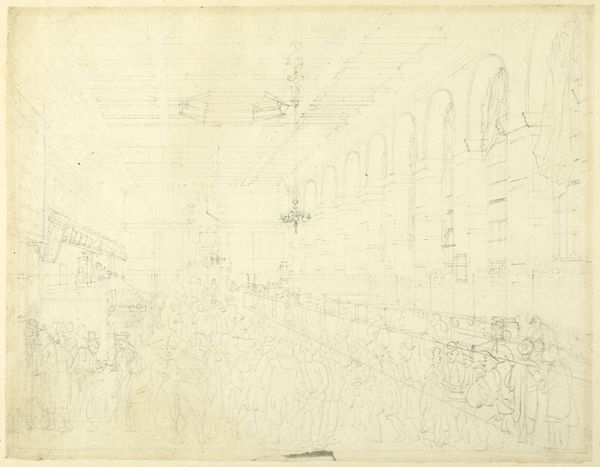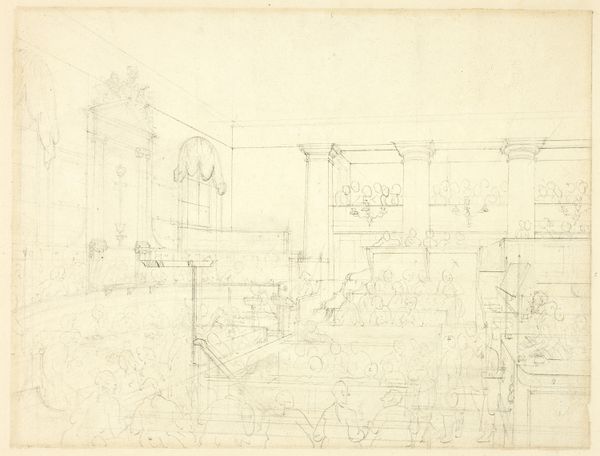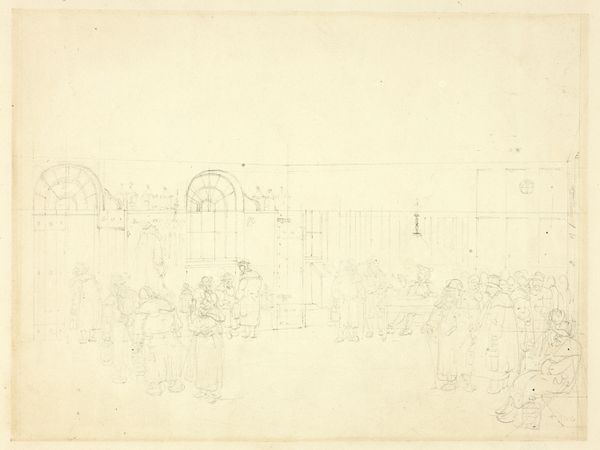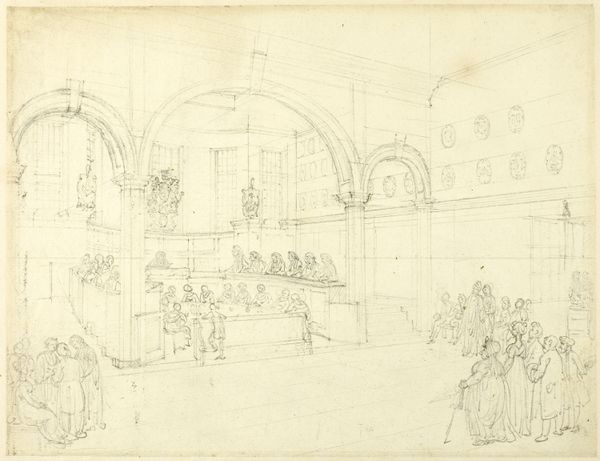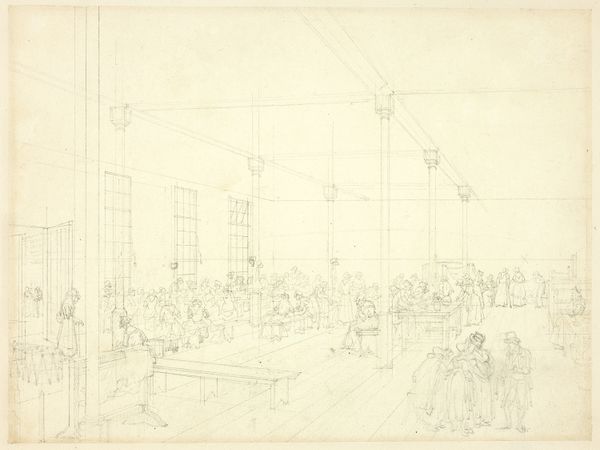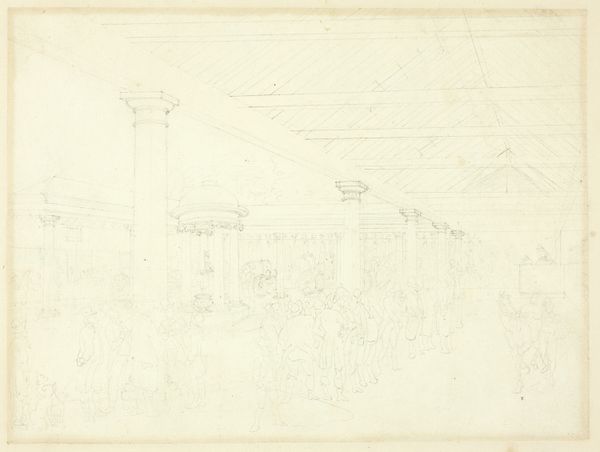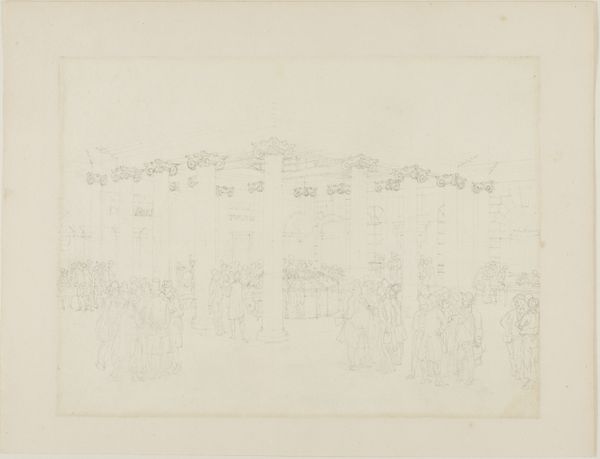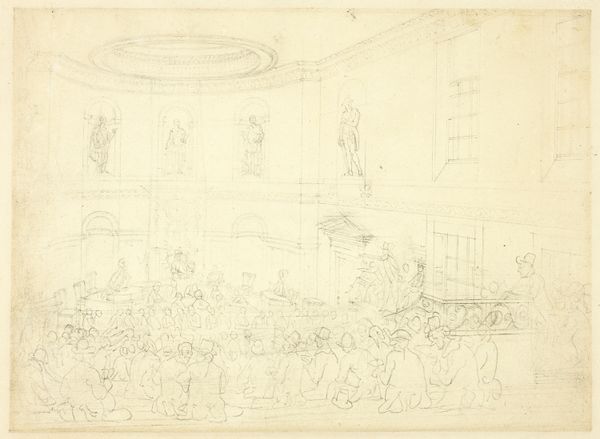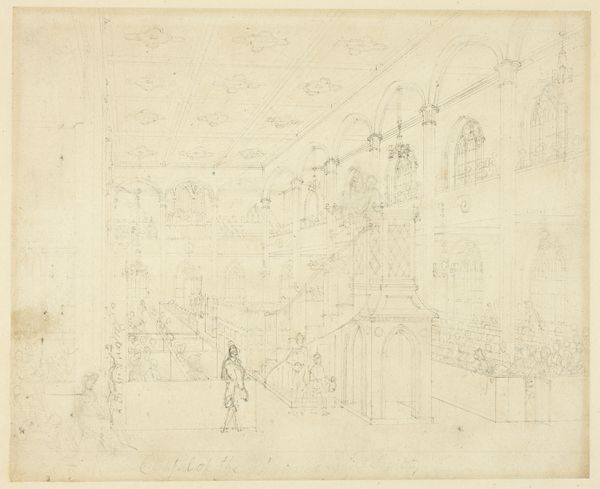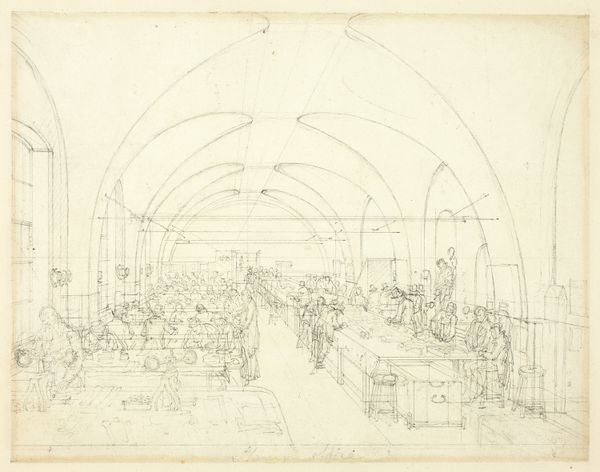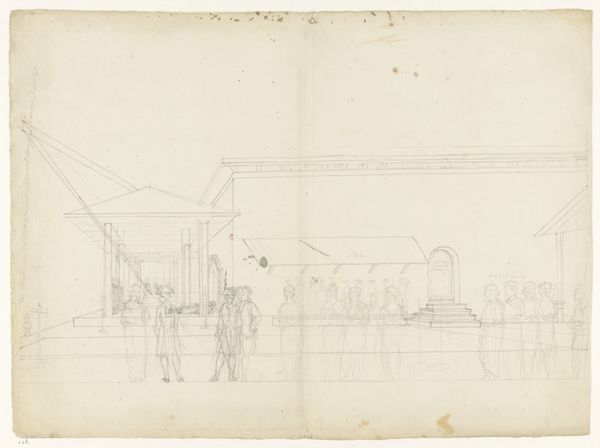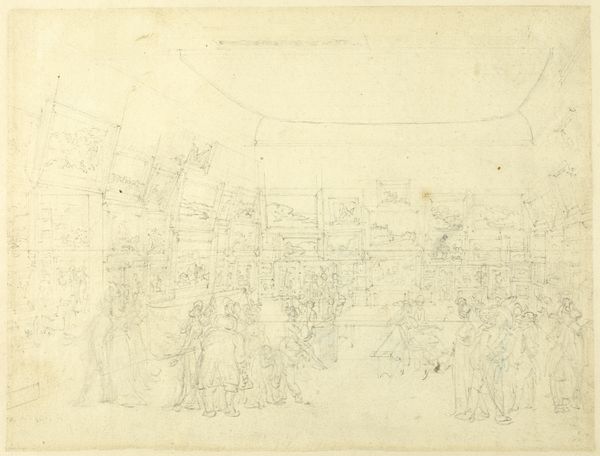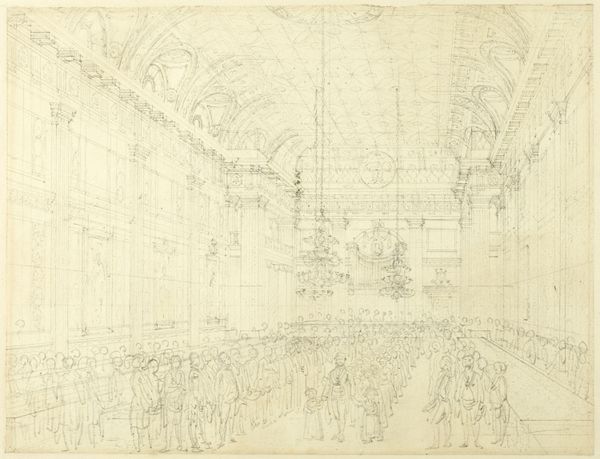
Study for Corn Exchange, Mark Lane, from Microcosm of London c. 1808
0:00
0:00
drawing, print, paper, graphite, architecture
#
architectural sketch
#
drawing
#
neoclassicism
# print
#
etching
#
paper
#
graphite
#
cityscape
#
architecture
#
realism
Dimensions: 198 × 260 mm
Copyright: Public Domain
Curator: Here we have Augustus Charles Pugin's "Study for Corn Exchange, Mark Lane, from Microcosm of London," circa 1808. It’s a delicate drawing using graphite and etching on paper, currently residing here at The Art Institute of Chicago. Editor: My first thought is that it feels unfinished, yet teeming with potential energy. You see the skeletal architecture alongside these blurry, almost ghostly figures congregating within. It feels so provisional. Curator: Absolutely. Consider the context – this drawing served as a preliminary study for a larger publication illustrating London's key institutions. The Corn Exchange was a critical hub for trade, reflecting the economic power and social dynamics of the city. These figures, while gestural, represent that dynamism. Editor: It's interesting how that neo-classical architectural style – those dominating pillars! – contrasts with what appears to be the almost chaotic buzz of human interaction at ground level. Is this drawing attempting to convey social hierarchy, maybe through architecture’s imposed order? Curator: That's insightful. The neo-classical style, which gained prominence in the 18th century, projected stability and rationality through architectural order, and so its institutional power becomes palpable here. The figures occupying the space may or may not subscribe to these principles. So perhaps the drawing invites a subversive reading. Editor: What strikes me is who isn’t present: what classes, what races are represented in the marketplace? What does the composition’s implied exclusivity say about power, then and now? Curator: It asks us to consider who benefitted from and was able to actively participate in such economies. These prints, widely disseminated, shaped perceptions of civic life and social status, inevitably favoring some identities over others. Editor: The level of precision mixed with the implied energy tells a great story of its time period and perhaps still speaks today. I appreciate the contrast of form. Curator: Yes, the beauty in process, coupled with its implicit sociopolitical awareness – it gives one much to consider, even beyond the specific history of the Corn Exchange itself.
Comments
No comments
Be the first to comment and join the conversation on the ultimate creative platform.
